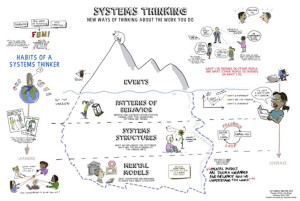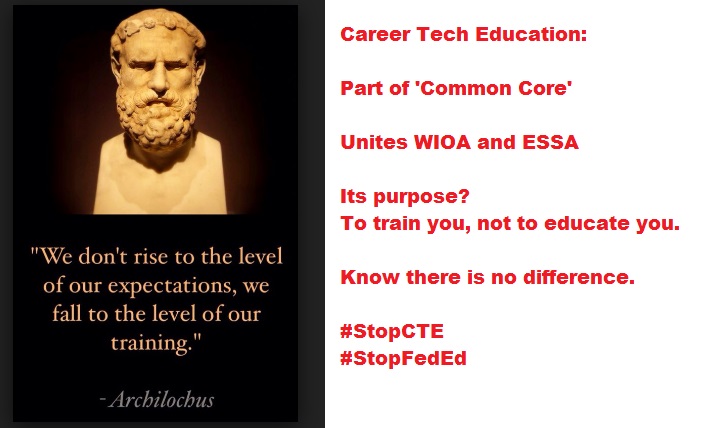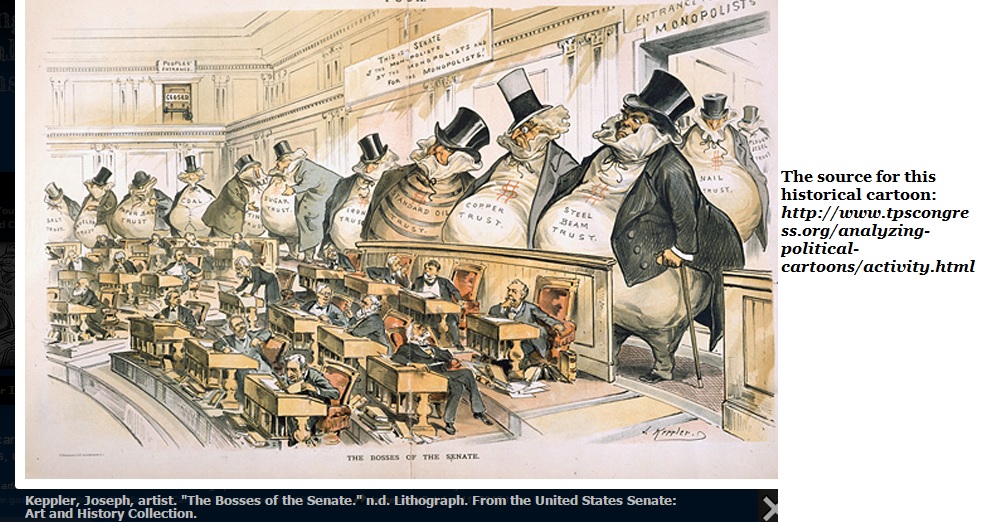It’s “From the Files” Tuesday!! Time for me to share something from the stash of CCSS downloads I’ve been able to collect. Today’s feature: “ST and SEL”. Huh?! What’s “ST”? What’s “SEL”? “ST stands for ‘systems thinking’. “SEL”, is short for social and emotional learning’. ST and SEL _ Soled Partnership As my files go, this is not a particularly big one and is skimpy on information. However, if we look closely, even this ‘slim jim’ can reveal much.
“Triple Focus” or Triple Whammy?
From the main website, selling the book you see above, the description is as follows: “Daniel Goleman and Peter Senge provide educators with a rationale for incorporating three core skill sets in the classroom—understanding self, other, and the larger systems within which we operate—and show why these competencies are needed to help students navigate a fast-paced world of increasing distraction and growing interconnectedness.”
Okay, well said, but what exactly does this description mean? Who are these gentlemen and where’s the CCSS connection? Let’s press on.
SEL:
Social and Emotional Learning is a global movement. One portion of its development began as “Social Development Curriculum”. Created by Roger Weissburg, formerly of Yale University’s Psychology Department, now at the University of Illinois, Chicago as “Chief Knowledge Officer”.
‘SDC’ is considered (at least by the authors) to be one of the pioneering pieces of SEL. Their argument is if you behave well in class, you’ll perform better in class…especially at testing time.
Here’s what CASEL (Collaborative for Academic, Social, and Emotional Learning) says the outcomes for SEL are to be:
“The short-term goals of SEL programs are to one, promote students’ self-awareness, social awareness, relationship and responsible-decision-making skills; and two, improve student attitudes and beliefs about self, others and school.”
CASEL defines academic, social, and emotional skills can be grouped into 5 ‘core clusters’. While you really will want to check out the 5 core clusters, I’ll share just one of them. I think you’ll understand why when you consider where all this is leading up to Common Core. Here’s the exact definition of self management: ‘The ability to regulate one’s emotions, thoughts, and behaviors effectively in different situations. This includes managing stress, controlling impulses, motivating oneself, and setting and working toward achieving personal and academic goals.’ See the rest: http://www.casel.org/social-and-emotional-learning/core-competencies
So how are SEL, CASEL, and the authors connected?
Daniel Goleman is one of the co-founders of CASEL as well as the co-author of the “Triple Focus”. Also sitting on the Board of CASEL are Mr. Weissburg (from above), Linda Darling-Hammond (a well known pro CC advocate), and the University of Illinois at Chicago is where their research base is held. As in any collaborative, especially in education today, you’ll find all kinds of groups represented. This one’s no different. Among the different schools and youth groups(including Special Olympics) guiding CASEL, the following pro-CCSS companies or charitable trusts are involved:
Institute of Education Sciences, a direct arm of the U.S. Dept. of Education..absolutely no need to wonder where CCSS support is there. You’ll want to read their connection to CASEL: http://www.casel.org/funders/institute-of-education-sciences
Noyce Foundation, “In 2013, CASEL received its first-ever grant from the Noyce Foundation for a collaboration with the Charles A. Dana Center at the University of Texas at Austin. The Dana Center focuses on mathematics and science education with an emphasis on strategies for improving student engagement, motivation, persistence, and achievement. The CASEL and Dana Center project focuses on the intersection between SEL and the Common Core State Standards for Mathematics.”
To see all the others at CASEL: http://www.casel.org/people
SOLED (Schools and Communities Learn for a Sustainable Future, part of the SOL Education Partnership):
From the thin file I’ve shared, if you open it, scroll down to the bottom, you’ll see in red, “Deeper Learning and the Common Core”. That’s where we are headed next. It’s a post from 2013. Here’s the link: http://soledpartnership.org/450/
The post tells you the project actually began in 2012. Is funded in part by the Hewlett Foundation (we heard of their CC funding in other posts). If you read a bit further, you’ll see ‘related articles’. Here’s an excerpt from one of those about the beauty of CC and systems thinking. “The Common Core Deeper Learning project draws connections between the rigorous learning of the CCSS and the use of system thinking tools and habits. The nearly perfect match of the CC ELA Standards for Reading and the systems thinking…” The excerpt is from a 2014 article.
“The main intention of the CCSS
is to prepare students in the U.S. for success in higher education
and in the workforce.”
Sherry Martin, Ed Director for ‘Deeper Learning through CCSS’
Here’s the “Constructing Meaning” report the above quote is featured in: Constructing-Meaning-SM One of the thinking models referred to is the “Iceberg”. Here it is below, you’ll need to click to enlarge it.

ST:
Systems Thinking was ‘discovered’ back in 1956 by an MIT Professor Jay Forrester as a component to better understanding new ideas in social settings, much like we do in understanding fields like engineering. Why engineering? Because preciseness is needed. According to the Thinking Net (website: http://www.thinking.net/Systems_Thinking/OverviewSTarticle.pdf), where I found an easy to understand explanation of ST, states that traditionally, we break our thinking down into small pieces. Systems thinking doesn’t do that. You’ll notice, if you access the pdf above, it is using crops as an example. Supplant that example with CCSS and our students.
Contrast that example of ST with the one from Waters Foundation, which helps fund the CC Project we’ve been looking into.
“Systems thinking utilizes habits, tools and concepts to develop an understanding of the interdependent structures of dynamic systems. When individuals have a better understanding of systems, they are better able to identify the leverage points that lead to desired outcomes.”
Now, consider the two. Can you imagine why kids are struggling with the CCSS so much? It is developmentally unsound to expect a younger student to see an entire system. They have to break things down in smaller pieces! We don’t begin our students with books, then expect them to DIGRESS from there into paragraphs, sentences, words, and letters, do we? NO!! We begin with letters, move UP to words, sentences, paragraphs, and then books.
Just in case you want to see how ST is embedded in CCSS: http://watersfoundation.org/systems-thinking/standards/
Just in case you want to see how SEL is embedded in CCSS: http://greatergood.berkeley.edu/article/item/how_to_integrate_social_emotional_learning_into_common_core
Closing thought:
If you go to vote today, please consider the candidates, especially for school boards. Are they supportive of CCSS? If so, don’t allow them into office. If they are on the fence, share this information with them, as well as all the other information you have about the inappropriate development component of Common Core.



2 thoughts on “FTF Tuesday: ST, SEL, Common Core”